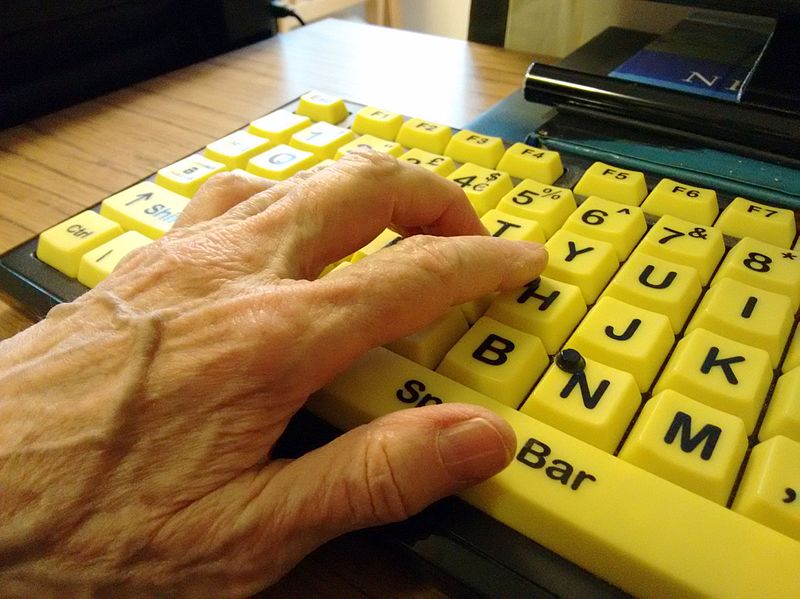
Inclusivity in Web Design
Web design should always be inclusive. For any beginner designer, do you factor in differently-abled users in your design considerations? There are actually different considerations when creating an accessible website as there are many forms of different abilities.
Those that are most affected include people with auditory, visual, and physical disabilities. Is an application or a website easy to navigate for people who have difficulty using their limbs, neck, and head? Is the website screen-reader friendly for those who are visually impaired? Do written guides like captions and visual pointers provide easier access for the hearing impaired? These are just some of the common design considerations.

Image Source: Pixabay
However, there are other forms of disabilities that must be considered as well. There are cognitive, speech, and neurological impairments to consider as well. Does a person with a learning disability be able to understand what the website is coming across? Is the website friendly for people who have sensory sensitivities (sensitivity to bright colors or loud sounds)? Will the color contrasts, backgrounds, and design elements prevent stimulus to epilepsy or other seizure-related illnesses?
On top of this, there are situational and temporary impairments to consider as well. For instance, adjustments for visual impairments due to old age should also be considered. How about people with only mobile devices, is the website mobile friendly for these users? How about people living in rural areas with poor connectivity, is the website fast enough to load for them? The internet is a vast place and, as designers, guiding differently-abled people through it should be a core responsibility. It is actually not just in laying out a website, the overall development of a blog or page should also be affected.
What is an Accessible Website?
Accessible websites are those that provide the power of the internet into the hands of all users – abled or impaired. There are international standards used to create accessible websites, and these are known as the Web Content Accessibility Guidelines or WCAG. This ensures that the internet is a safe place for all kinds of users no matter the gender, age, race, or ability. There are three levels of conformity – A, AA, and AAA. The first level is the most basic, with only standard requirements of accessibility. The final level, AAA, has satisfied high-volume accessibility. This means that it has satisfied requirements for older users, users of a different language, and more.
How to Make a Website Accessible?
The first thing to do when creating an accessibility-ready website is to always look at a page in their shoes. What could be a stumbling block on a website for any impaired person? Here are a few basic considerations when creating an “accessible” website:
Provide captions for videos
For accessibility, videos on any website should be provided captions. The great thing is that there are multiple free tools online that allow automatic caption-creation for videos. Adding captions for videos is beneficial not only for individuals with auditory difficulties but also for people who would prefer to watch videos without sound. Yes, depending on the situation, some people would prefer watching videos without sound. It may be inside a public commute, inside the library, while getting your kids to sleep, and the like. Overall, captions are always helpful for websites.
Maximizing web development tools like Alt Text
Ever wondered what the Alt Text is for? It is not to simply describe an image, its source, or whatnot. It is to provide a text description for an image for visually impaired users. This way, the user could get an idea in their minds what the image looks like through the descriptions. This text will be added in place of images for people who cannot ‘see’ the uploaded photo. On top of that, adding Alt Text for images on a website is always helpful for image SEO. Undescribed images cannot be “seen” by Google crawls but the descriptions could be used whenever an image search is in place.
Avoid over-designing and over-crowding the page
Overcrowding a page is never a good technique for web designers. It significantly affects the user experience and makes the website irritating to use. Always opt for a simple layout or template. Going for a clean web layout is helpful not only for differently-abled users. Ease of use is also available for all users. The webpage will also appear cleaner and more professional looking. It is also helpful to place important navigation tools in their respective locations like the search bar, contact button, and the like.
Allow for keyboard navigation
It is possible to use the keyboard for using the internet, or any device for that matter. Making sure that typical keyboard shortcuts for website navigation are important in ensuring great website user experience. To add to this, it is always great to find a way around dynamic content. These are websites where the elements are moving or have a parallax effect. These kinds of websites are difficult to navigate for people with disabilities. They are also difficult to design with keyboard navigation.
Also Read: Modular Web Design Advantages and Disadvantages
The post How Does Accessibility Relate to Web Design? appeared first on SpyreStudios.















